Trekking to Everest Base Camp
A Photographer’s Journey Through the Himalayas
By Brice Weaver
They say the trek to Everest Base Camp is life-changing. What they don’t mention is the cold coffee, the thin air, the persistent headaches, or the moment you think you might be sleeping in the snow with a herd of yaks. Still, I’d go again tomorrow.
I didn’t do this to conquer anything. I went because I needed something real — something that couldn’t be scheduled, optimized, or compressed into a grid. I went to carry a camera, not as a tool, but as a way of paying attention.
What follows isn’t a list of gear or logistics. It’s a record of light, silence, altitude, and the moments in between.

Kathmandu: The Friction Before the Stillness
The first thing that hits you in Kathmandu isn’t the view — it’s the scent. Incense, exhaust, dust, and spice rolled together into a kind of warm chaos. Right off the plane, I had one goal: figure out where to go for my domestic flight to Lukla the next day.
So I did what any clearly jet-lagged traveler would do — I asked a guy with an AK-47.
He didn’t speak English, but quickly handed me off to another man who grabbed my backpack and motioned toward a car. No introductions. No explanations. Just a quick, silent agreement that I was now going somewhere with him.
After a tense few minutes of wondering whether I was being kidnapped or helped, I ended up at a hotel — one the man apparently co-owned — and, to my surprise, he helped me book my flight to Lukla. It wasn’t the most transparent travel experience, but it worked.
Departure: Coffee, Chaos, and Luck
The domestic terminal in Kathmandu is something between a loading dock and a waiting room. Noise echoed off tile floors. Bags and climbing gear were stacked in every corner. English was scarce, and so was elbow room.
I remember the space more by feel than layout: one small coffee stand, a single convenience store, and a crowd of trekkers, climbers, and porters packed into a tight queue of anticipation and uncertainty.
I was halfway through my coffee — the kind that tastes more like survival than flavor — when I met the only fluent English speaker I’d come across so far: a woman from England, also traveling solo. We chatted briefly, compared plane tickets, then went our separate ways.
My flight — somehow — would be the last one to make it out that day. Hers taxied out, then got turned around on the runway due to weather. The Himalayas don’t care about schedules.
What I remember most wasn’t boarding. It was that first glimpse of Everest, sharp and silent above the clouds, filling the window like it had been waiting.
The woman next to me — not the one from the terminal — was visibly panicking. Her breathing quickened as we approached. I stayed focused on the window.
Lukla is considered one of the most dangerous airports in the world — and it earns it. You clear a cliff, drop onto a short runway that slopes uphill, and stop hard before a stone wall says otherwise.
The brakes hit like a brick. Everyone in the cabin lurched forward. Then, somehow, we stopped.
I stepped off into colder air, grabbed my gear, and started walking.
Phakding: A Soft Start and Thinner Air
The first day on the trail was short — just 4.5 miles from Lukla to a small village called Phakding. The path followed the river gently, cutting through pine-covered hills and quiet, low-built homes. No drama. Just movement and breath.
You feel the altitude in small, persistent ways. Breathing isn’t hard, but it’s no longer automatic.
Phakding felt untouched. Tin roofs. Chickens in the yard. Laundry hanging like prayer flags on the breeze. I took a photo of it all — simple, domestic, grounded. After days of airports and logistics, it felt like a return to stillness.
My host was warm and unhurried. The room was small: a bed, a thin blanket, wood-paneled walls. But it was enough. That night, I fell asleep not fully rested — but finally still.

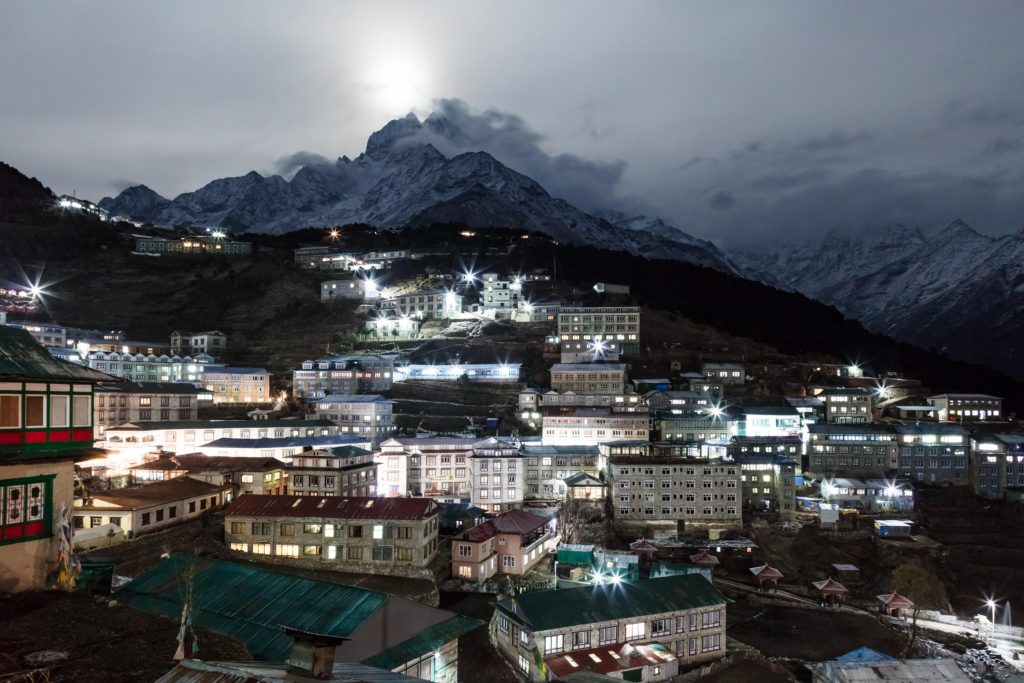
Namche Bazaar: The Mountain City
After a big breakfast and decent coffee, the hike to Namche was steady but not difficult. Altitude made itself known in the background — like a hand pressing lightly on your chest.
Namche itself was a different world. Built into a mountain bowl, it’s the largest village in the region — and it moves like one. Sloping alleys that barely qualify as streets are lined with gear shops, tea houses, and trekkers on rest days. Kids ran through plastic crates. A coffee shop served espresso and patchy Wi-Fi.
That’s where I saw her again — the woman from the terminal. She’d made it up on a later flight. We laughed at the odds, exchanged updates, and continued on. Just two solo travelers orbiting the same trail.
I spent two nights in Namche to acclimate. I hiked to the Everest View Hotel, shot the town at night under a thin layer of cloud, and woke the next morning to snow — light, dry, clean. The tea house offered a cold bucket shower. I passed.
There were miles ahead. And I’d earned the right to smell like the trail.

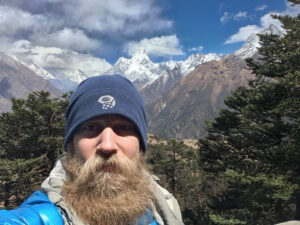
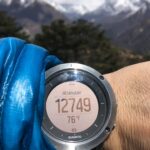
Tengboche: Cold, Thin Air, and Almost No Room at the Inn
The trail to Tengboche was colder, harder, and quieter. A snowstorm moved in mid-hike, and by the time I reached the village, visibility was shot and my hands were numb. I was exhausted and definitely feeling the altitude.
The first tea house was full — booked by a group. The next one, also full.
That’s when the quiet kind of panic sets in. The I might be sleeping outside tonight kind.
Finally, I found a tiny place off the main trail. One room left. Thin walls. Cold corners. But a roof, a door, and shelter from the storm. That night, that was all I needed.
Above the Bridges: Headaches, Heights, and a Moment of Stillness
From there, the bridges became more frequent — and more spectacular. Thin spans of metal and prayer flags hung over massive river drops, wind whipping your jacket while snow flurried in from every direction.
Breathing was harder. Headaches were constant. Every step was a negotiation.
At one point, I noticed a few trekkers clustered near the edge of the trail, pointing down the cliffside. I joined them — expecting a view, maybe a photo.
Instead: Himalayan blue sheep. Rare to see. Perfectly still. Perfectly part of the landscape.
I thought about grabbing my camera. Thought about digging it out of the pack. But I didn’t. Some moments don’t need to be shot to be real.
I watched for a minute, then kept walking.
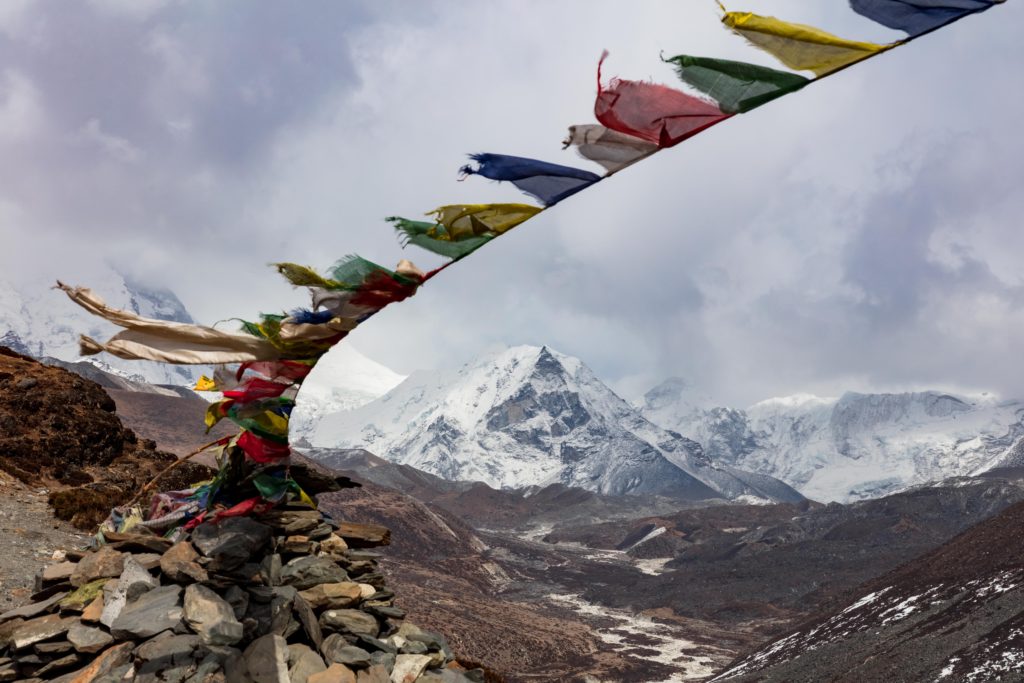
Base Camp: Not the Shot, But the Stillness
Base Camp is more symbolic than scenic — rocks, wind, tents, flags. But arriving isn’t about the image. It’s about the shift.
I didn’t take many photos there. A few. One of the prayer flags straining against the wind. One of the glacier. That was enough.
Sometimes, being present is better than being productive.
I sat down. Let the cold soak into my boots. Let the moment settle. The best frame I took that day was the one I didn’t need to show.
What I Brought Home
I came back with fewer photos than I expected. But each one carries weight. I didn’t return with a portfolio — I returned with perspective.
The trail taught me that photography isn’t about grabbing moments. It’s about earning them. Sometimes that means waiting. Sometimes it means walking past the shot. And sometimes it means knowing when to press the shutter — and when to just keep going.
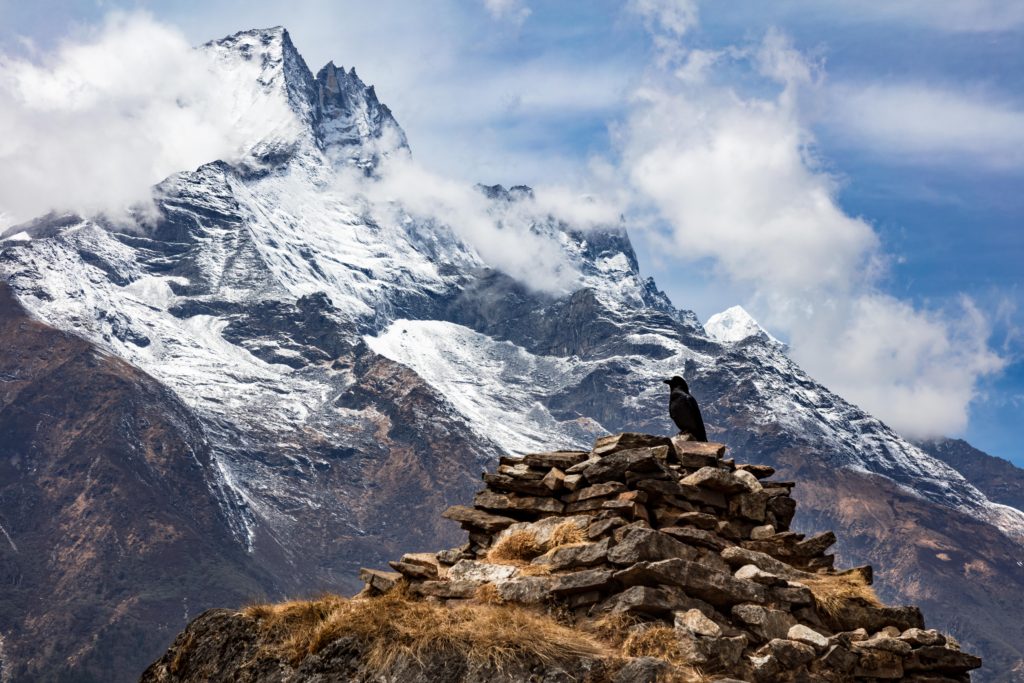
Through My Lens, For Now
If this story pulled you in — if it made you want to slow down, breathe deeper, and look longer — share it. Or better yet, step out into something unknown and bring back your own stillness.
I’ll be here next Tuesday, sharing another story from behind the lens — different terrain, same search for something honest.
– Brice

1 Comment
Comments are closed.